#muso shinden ryu iaido
Text
This is a blog for all things martial arts.
I hold yondan (4th Dan) in MSR Iaido, 2nd Dan Shotokan Karate, 1st Dan Kobudo and 1st Kyu (brown belt) Hontai Yoshin Jujitsu (original Japanese).
I will share videos and photos of our dojo where we learn, practice and teach the above arts. Our society also has Aikido, Aiki Jujitsu, Kendo, Judo, Brazilian Jujitsu, sometimes Krav Maga.
Anyone with like minded interests can join this blog, share to it etc etc. Pl ase be polite and no putting down other arts unless it's a bonafide Mcdojo.
We like practical applications, we like bunkai, we like pain.
Have fun and let's share our knowledge
1 note
·
View note
Text

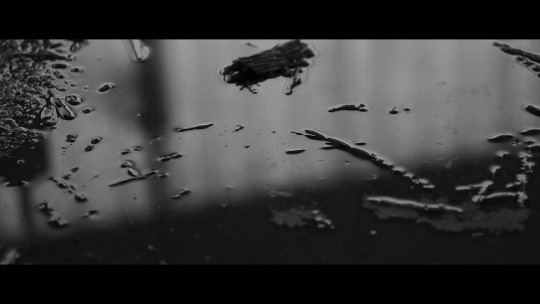
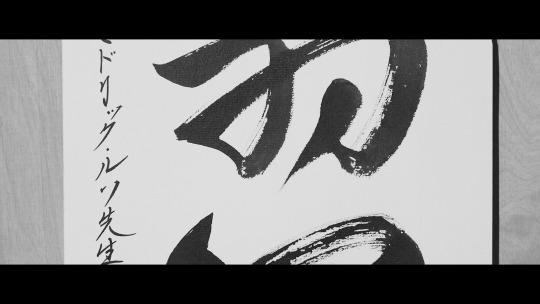
#meikikai#japan#aikido#the view electrical#music video#switzerland#black & white#iaido#Muso Shinden Ryu#kenjutsu
1 note
·
View note
Text
Embu de año nuevo 2024
Empezamos el año con una buena práctica de #iaido
youtube
0 notes
Text
Parts of a katana

These patterns often resemble wood grain, known are masame and itame hada. With old Japanese Nihonto this is a good indicator of which school an authentic Japanese sword comes from. Often this is called damascus but this is actually not correct, this was a way of forging which comes from the middle east and is called Damascus in Syria.īy the way the folding pattern or hada comes to the surface you can see which forging method a blacksmith has applied. This is due to the folding of the steel, this often happens between 8 and 12 times. As soon as there is a chip or tear in the cut that passes the hamon, the sword is worthless.īecause some katanas are folded you get to see a clear pattern of layers. The sheath is also not damaged in the way. As soon as the samurai sword is on a stand, it is with the cut up so that it cannot be damaged in the sheath or saya. Other names for the Ha are also Hasaki or Yaiba. This is the name for the hard cutting edge of the sword. This part of the blade is the least sensitive of breaking or crumbling in contact, as opposed to the Ha or cut. In some Japanese swordmanship ryu the mune is used to block. This runs from the Mune-machi to the tip or kissaki of the blade. This is the back of the blade and you can see it as the back. That is also the reason why the iaitos used in iaido, Shindo Munen-ryu, Kenjutsu, Battojutsu and Muso Shinden-ryu, The main reason for a bo-hi is a lighter and faster sword which is easier to handle. A bo-hi does not cause the sword to lose much strength. The term blood groove is because there are theories that once you put it into someone, a sword can draw a vacuum, which means you can pull your sword just a little slower again. This ensures that the sword is lighter and therefore more agile. A medium-high shinogi is the most versatile and is suitable for light and heavy purposes.Ī groove that runs the length is called the Bo-Hi or blood groove. The higher the shinogi, the more suitable it is for hard targets and vice versa. The shinigo and shinog-ji are interdependent and influence the extent to which a sword is suitable for the hardness of the targets. This line has a strong influence on the appearance and character of the sword. The shinogi is the dividing line between the oblique portion that transforms the blade into the flat portion or shinogi-ji of the blade. This is the backline or ridge of the blade that runs from the yokote line to the nakago or tang. The curvature of the kissaki is called the fukura. You have the o-kissaki (large), chu-kissaki (medium) and ko-klssaki (small) lengths which therefore indicate whether the point is large or small. The size of the kissaki varies per period. This is a clear geometric line that separates the fan-shaped part of the tip from the blade. This can look different and is often separated from the rest of the blade with a yokote line. The point or point area on a Japanese sword is called the kissaki. On this picture you can clearly find all parts of the samurai sword. The blade itself is often complex and has various functions. Every detail has been clearly thought through and often lags behind what you would initially expect. The samurai sword is an efficient deadly weapon but also a work of art in itself. The katana has tsuba to protect the hands and with a long handle or handle that you could hold with two hands.ĭuring the kamakura period, the katana or samurai sword became well known, and this was closely related to the way the samurai warriors waged war. These blades had an elegant curve and had a sharp edge on one side. The blades of the samurai swords from feudal Japan are known all over the world.

3 notes
·
View notes
Text
Watch "Muso Shinden Ryu Iaido Kata: Shohatto, Sato, Uto, Atarito" on YouTube
youtube
@soul-dancer-lyris
An example of what Carli and Johann were doing
7 notes
·
View notes
Video
@Regran_ed from @farbodkokoro - Muso shinden ryu Ishido sensei katana #katanasword #katanas #samurai #iaido #iaidoka #iaijutsu #shinken #japan #japansword #kendo #kenjutsu #ایران #هنررزمی #هنررزم #ای آی دو #ای آی جوتسو #جوتسو #سامورایی #کن دو #کنجوتسو #ژاپن #نینجا #نینجوتسو #نینجارنجر #کونوایچی #آیکیدو #ورزش #شمشیرسامورایی #کاتانا #کاراته #جودو https://www.instagram.com/p/BrMRMhxlX6A/?utm_source=ig_tumblr_share&igshid=rky3puozl2jl
#katanasword#katanas#samurai#iaido#iaidoka#iaijutsu#shinken#japan#japansword#kendo#kenjutsu#ایران#هنررزمی#هنررزم#ای#جوتسو#سامورایی#کن#کنجوتسو#ژاپن#نینجا#نینجوتسو#نینجارنجر#کونوایچی#آیکیدو#ورزش#شمشیرسامورایی#کاتانا#کاراته#جودو
19 notes
·
View notes
Photo
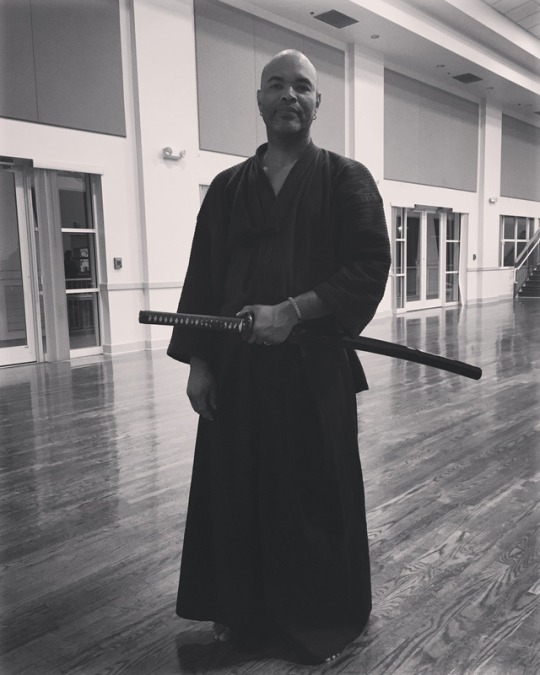
3 notes
·
View notes
Photo
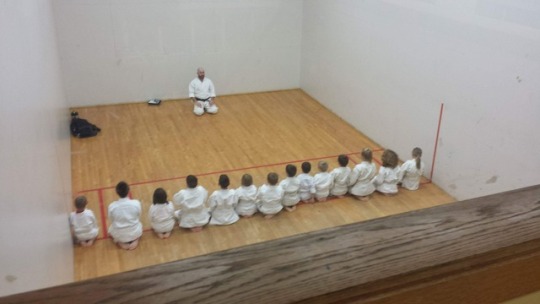

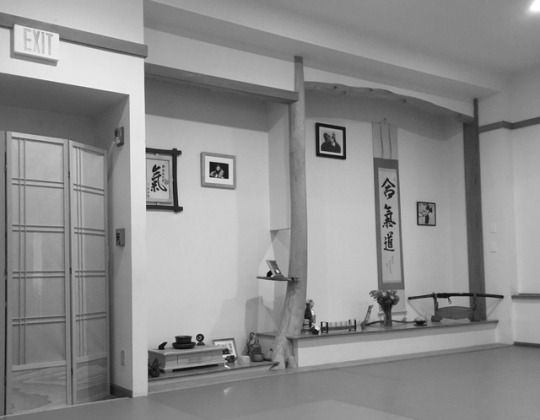

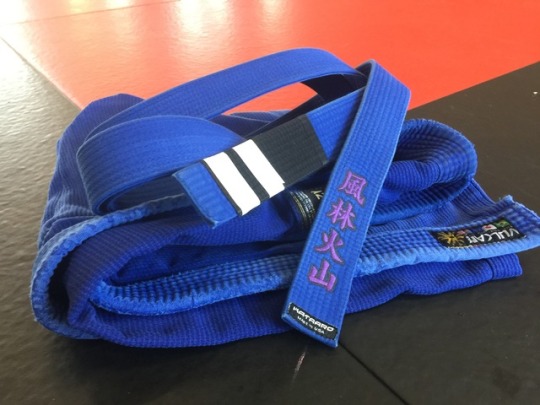
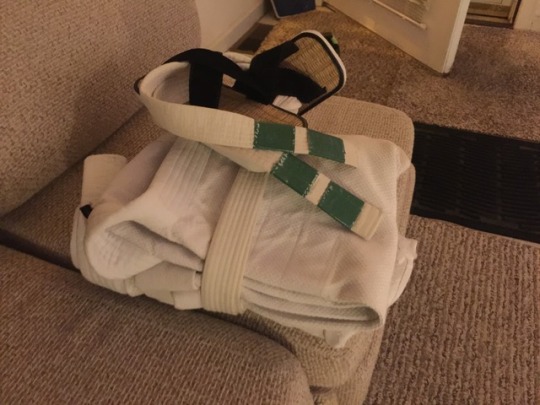
As strange as it is to think about, I’ve become accustomed to tiny humans in martial arts uniforms calling me “sensei”. Even more interesting, I started officially teaching for myself in January, with 4 students, and that Number is now up to 15 (and there are more individuals looking for trial classes soon). Official rank has been granted under the association I am part of (granted by me, and approved by the organization). In essence, I have stepped into the role my original instructor had when I met him and began studying Goju Ryu Karate Do, over twenty years ago. Adult classes are in the works as well.
I have also progressed in Brazilian Jiu Jitsu, and since my instructor’s school is 45 minutes away, he has granted me permission to start taking on students where I teach as part of his school (he would periodically test my students, and grant them rank, as I am not yet qualified to do so myself).
I’ve also been awarded rank in Aiki Ju Jutsu, and have resumed studying Muso Shinden Ryu Iaido. It’s been quite a year, come to think of it.
#karate#karatedo#karate do#goju#gojuryu#gojukai#goju ryu#goju kai#dojo#bjj#brazilian jiu jitsu#grappling#aiki#aikijujutsu#aiki ju jutsu#aikido#iaido#swordsmanship#blue belt#black belt#white belt#martial arts
18 notes
·
View notes
Text
Practicando Muso Shinden Ryu en el seminario de Koryu de Bruselas.
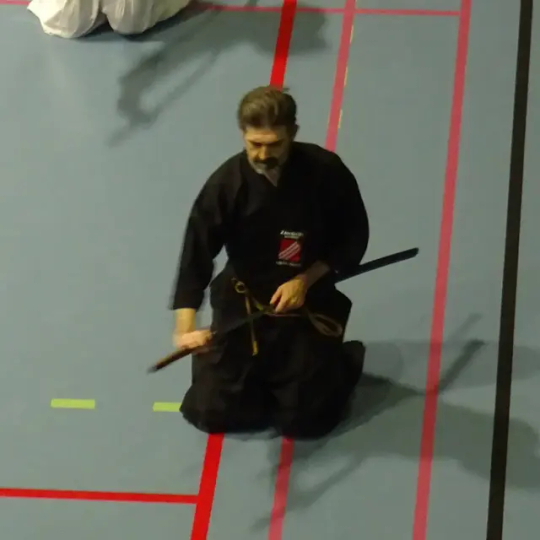
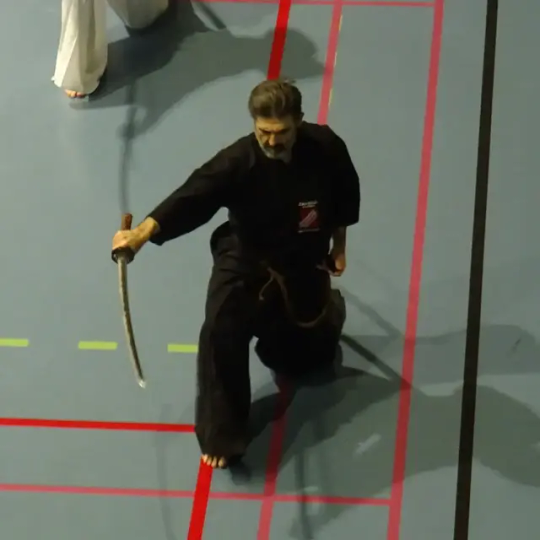

0 notes
Text
Iaido waza
I put together a list of all the Iai waza that I know of, and stole some info off Wikipedia to flesh it out.
To level the playing field, most everyone learns Seitei Iai waza as set out by the ZNKR, governed by the Canadian Kendo Federation here. These sets ensure that people from different schools are taught something that can be more fairly judged. Each different school of Iaido has different waza. I don't know that any other than Muso Shinden Ryu (the form I study) and Muso Jikiden Eishin Ryu are taught in North America. I know of at least four or five other styles.
You'll notice that between MSR and MJER there is some name similarity - some of those waza are the same as the ones in the other school, some have the same intent but are done slightly differently, some are different waza but given the same/similar names. Junto and Kaishaku, for example, have the same purpose/intent, but are done differently (from what I've seen). I picked this one because it has some other considerations attached, which I think I've explained before: this waza emulates the actions performed by the second (kaishakunin) for a samurai who is committing seppuku (ritual suicide). Some don't consider it a waza at all, but more a form of etiquette. In my school, and in Jikiden schools also that I know of, this is never performed in front of outsiders, would never be used as a demo, and would never be used as part of grading, out of respect for its original purpose and those involved. You can find videos of both Junto and Kaishaku on YouTube. And if you choose to watch them, I'll explain the actions.
Anyhow, there are 12 Seitei waza (the ones with a star are the ones I used for my ikkyu grading last year):
Mae
Ushiro
Ukenegashi
Tsuka-ate
Kesagiri
Morote-zuki *
Sanpogiri
Ganmen-ate *
Soete-zuki *
Shihogiri *
Sogiri
Nukiuchi *
Then there's the koryu waza for my school:
MUSO SHINDEN RYU
SHODEN
Shohatto
Sato
Uto
Atarito
In'yo Shintai
Ryuto
Junto
Gyakuto
Seichuto
Koranto
In'yo Shintai Kaewaza
Batto
CHUDEN
Yokogumo
Toraissoku
Inazuma
Ukigumo
Yamaoroshi
Iwanami
Urokogaeshi
Namigaeshi
Takiotoshi
Nukiuchi
OKUDEN - SUWARI-WAZA
Kasumi
Sunegakoi
Shihogiri
Tozume
Towaki
Tanashita
Ryozume
Torabashiiri
Itomagoi
OKUDEN - TACHI-WAZA
Yukitsure
Rentatsu
Somakuri
Sodome
Shinobu
Yukichigai
Sodesurigaeshi
Moniri
Kabezoi
Ukenagashi
*Oikakegiri
Youshihikitsure
And if I really wanted to torture myself, I could join the other team and learn all the Jikiden waza as well.
MUSO JIKIDEN EISHEN RYU koryu waza
SEIZA NO BU
Mae
Migi
Hidari
Ushiro
Yaegaki
Ukenagashi
Kaishaku
Tsukekomi
Tsukikage
Oikaze
Nukiuchi
TATEHIZA NO BU (CHUDEN)
Yokogumo
Toraissoku
Inazuma
Ukigumo
Oroshi
Iwanami
Urokogaeshi
Namigaeshi
Takiotoshi
Makko
OKUIAI IWAZA NO BU (OKUDEN)
Kasumi
Sunegakoi
Tozume
Towaki
Shihogiri
Tanashita
Ryozume
Torabashiri
OKUIAI TACHIWAZA NO BU (OKUDEN)
Yukizure
Tsuredachi
So Makuri
So Dome
Shinobu
Yukichigai
Sode Surigaeshi
Mon'iri
Kabezoe
Ukenagashi
Itomagoi Sono Ichi
Itomagoi Sono Ni
Itomagoi Sono San
BANGAI NO BU (OKUDEN)
Hayanami
Raiden
Jinrai
KOMEI-JUKU (YAMAUCHI-HA)
Mae
Aranami
Kesaguruma
Takiguruma
Tatsumaki
0 notes
Text
My sword
An iaito is an unsharpened blade (sharpened katana are called 'shinken'), generally sandcast of aluminium-zinc alloy (as opposed to a forged carbon steel shinken). They are used primarily for the practice of Iaido. The length of the blade depends on the user's arm length and the style of Iaido they practice. The method of noto (re-sheathing of the blade) is a primary factor in Ryu-related sword length. My style, Muso Shinden Ryu, uses the - to my knowledge - longest blades because of sayabiki - how far back we are pulling the saya during nukitsuke and the start of noto. In a lot of schools/dojos, you aren't allowed to use a shinken in class until you're of a certain rank - third or fourth dan. Because shinken are so hazardous to use, iaito were created to facilitate the study of the art without lopping off body parts.
I acquired this sword from Taylor Sensei in Guelph in July of 2016. In so many ways it is not aesthetically what would I would have chosen had I the opportunity to get a custom sword made, but the first time I held it in the dojo, I knew this sword was mine. It felt right. For the detail-oriented - it's 2.45 shaku (about two and a half feet), with dragonfly menuki, vines around the fuchi, and Musashi tsuba.
I read somewhere that samurai used to name their swords. I haven't yet come up with a name for this iaito yet, but I figure that someday I'll just know what's right. I need to take some better photos of it. One of these days.
You can get swords with very ornate sword fittings. Mine are fairly simple, except for the dragonfly menuki (the fittings under the handle wrapping - they facilitate grip). Vines on the fuchi, a Musashi tsuba (hand guard), and a very simple tsuka-gashira (pommel).
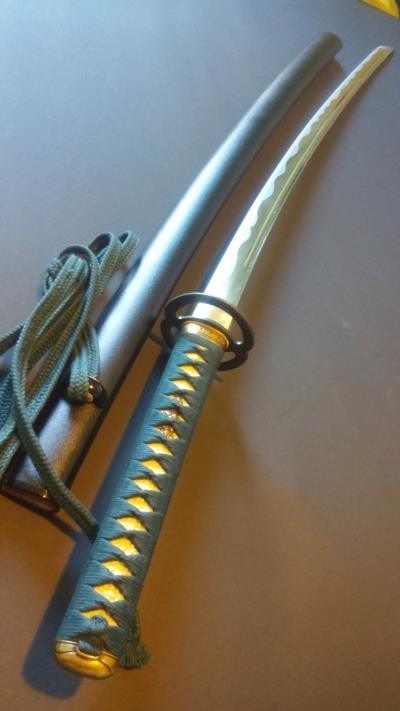
Update 2020 05 14: Ever pick something up for the first time and just know it's yours? It wasn't until I was talking with a fellow iaidoka a few months ago that I truly noticed something about my sword.
This person uses a very inexpensive shinken despite his rank, and I'd asked him if he ever considered getting a different one. I wish I could recall exactly what he said, but it did make me think about the 'life' marks on my sword. It wasn't until then that I really thought about the tarnish on the kashira, the wear on the ito/maki, the tiny nick in the blade where I accidentally hit one of my dojo mate's blades during class the first couple of weeks I had it. I'd noticed all these things before, but hadn't thought about them.
More significantly to me, though, was the spot on the tsuba worn shiny where my thumb has rested to hold it for the past three years. This sword is showing my life. I actually cannot comprehend acquiring another.
One of these days I'm going to have to find out what sort of hamon that is. I never have.
0 notes